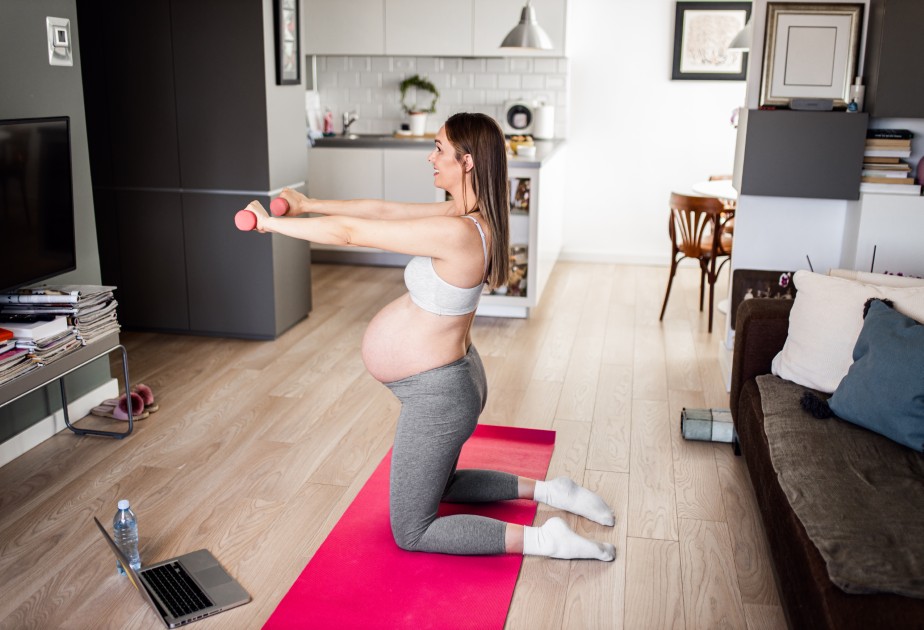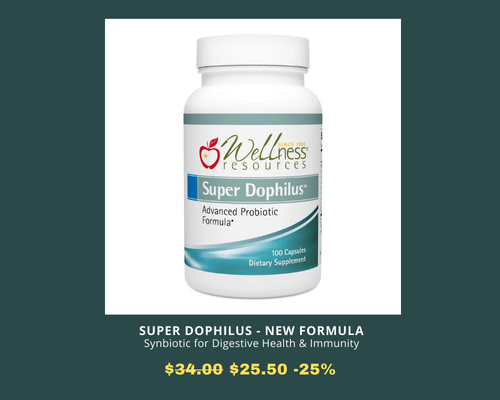Introduction: Congratulations on your journey into motherhood! Whether you’re a new mom or a fitness professional working with one, you might wonder how to stay fit safely during pregnancy and regain strength after birth. The good news is that exercise – when done right – can boost your energy, mood, and confidence through every trimester and beyond. In this guide, we’ll explore evidence-backed benefits of prenatal and postpartum training, safety guidelines, and sample workout routines to keep you feeling strong, motivated, and ready for the challenges of motherhood. Let’s dive in and discover how you can stay active, healthy, and inspired every step of the way!
Benefits of Exercising During Pregnancy
Staying active during pregnancy isn’t just safe for most healthy women – it’s highly beneficial for both mom and baby. researchgate.net. Research shows that regular prenatal exercise can help:
- Reduce pregnancy complications: Women who exercise have a lower risk of excessive weight gain, gestational diabetes (high blood sugar in pregnancy), and pregnancy-induced high blood pressure (preeclampsia). In fact, active moms are less likely to face problems later in pregnancy and may even have shorter or easier labors nhs.uk.
- Improve delivery outcomes: Staying fit increases your chance of a healthy vaginal delivery, reducing the likelihood of needing a cesarean (C-section) or other interventions. One expert review noted that pregnant women who did moderate aerobic exercise regularly were significantly less likely to develop gestational hypertension or require a C-section.
- Boost mood and energy: Exercise releases endorphins (feel-good hormones) that can lift your mood, decrease stress, and improve sleep. Many women find that light workouts relieve common pregnancy discomforts like back pain and fatigue, helping them feel more energized and positive.
- Control weight & support baby’s health: Gently elevating your heart rate helps manage weight gain and improves circulation. This delivers oxygen and nutrients to your baby and can support healthier fetal growth. There’s no evidence that moderate exercise harms the baby – it doesn’t cause miscarriage or poor fetal growth in uncomplicated pregnancies, obgproject.com. Always listen to your body, but know that staying active is one of the best gifts you can give yourself and your little one during pregnancy.
Safe Prenatal Exercise Guidelines
Before jumping into workouts, be sure to get the green light from your healthcare provider, especially if you have any medical conditions or pregnancy complications. For most healthy pregnancies, experts encourage regular exercise. Key guidelines include:
- Aim for 150 minutes per week: Health authorities like the WHO and ACOG (American College of Obstetricians and Gynecologists) recommend about 150 minutes of moderate-intensity aerobic activity per week during pregnancy (that’s about 30 minutes, 5 days a week). Moderate intensity means you’re getting your heart rate up but can still talk comfortably (“talk test”) – you’re slightly out of breath but not gasping. This could be a brisk walk, a gentle bike ride, or a prenatal exercise class. If you were very active before pregnancy, you can often continue with modifications; if you were sedentary, start slow and build up gradually.
- Choose safe activities: Opt for low-impact, low-risk exercises. Great choices include walking, swimming or water aerobics, stationary cycling, prenatal yoga or Pilates, light to moderate strength training (using bodyweight, resistance bands or light weights), and dancing or low-impact aerobics. These activities elevate your heart rate and strengthen your muscles without excessive strain. Many women also benefit from prenatal yoga for flexibility and stress relief, and Kegel exercises to strengthen the pelvic floor (important for childbirth and bladder control).
- Avoid high-risk exercises: Steer clear of activities that could cause trauma or falls. Contact sports (like soccer, basketball, kickboxing) or sports with a risk of impact or falling (horseback riding, downhill skiing, mountain biking, etc.) should be avoided during pregnancy. nhs.uk. Skip scuba diving (risk of decompression issues for the baby) and avoid exercising at very high altitudes without acclimation. After the first trimester, avoid exercises that require lying flat on your back for long periods (such as certain bench exercises), because the weight of your baby can press on blood vessels and make you dizzy. Also, be cautious with overly hot environments – no hot yoga or sauna-like conditions, as overheating is risky for the fetus. When strength training, use moderate weights and avoid breath-holding (the Valsalva maneuver); exhale during exertion to keep blood pressure stable.
- Stay hydrated and cool: Drink plenty of water before, during, and after exercise, and avoid working out in hot, humid weather. Wear lightweight, breathable clothing. Pregnancy raises your core temperature, and you don’t want to overheat. If it’s warm, consider exercising in an air-conditioned space or water (swimming is perfect to stay cool!).
- Listen to your body: Perhaps most importantly, pay attention to how you feel. It’s normal for exercise to feel harder as pregnancy progresses – your body is working hard growing a baby! Slow down or modify exercises as needed. You should be able to hold a conversation; if you’re too winded to talk, scale back the intensity. Never push to the point of pain, dizziness, or exhaustion. Stop exercising and call your doctor if you experience alarming symptoms like vaginal bleeding, severe abdominal pain, regular painful contractions, fluid leakage, dizziness or faintness, or chest pain obgproject.com. These could be warning signs that need medical evaluation. Otherwise, stay consistent and enjoy your workouts – consistency (not intensity) is key to reaping the benefits.
Sample Prenatal Workout Routine
To help you envision a safe prenatal workout, here’s a sample full-body prenatal routine suitable for most trimesters. This routine focuses on gentle cardio, strengthening key muscle groups, and flexibility, and can be done in about 30 minutes. Always warm up first and modify any move that feels uncomfortable:
- Warm-Up (5 minutes): Start with a brisk walk or marching in place for 5 minutes to get your blood flowing. Add some shoulder rolls and gentle neck stretches.
- Bodyweight Squats – 2 sets of 10-15 reps: Stand with feet hip-width apart, lower into a comfortable squat (as if sitting on a chair) and rise up. Squats strengthen your legs and glutes, supporting the extra pregnancy weight and prepping for lifting your baby. Hold a sturdy chair for support if needed.
- Wall Push-Ups – 2 sets of 10-15 reps: Stand facing a wall an arm’s length away, hands on the wall at shoulder height. Bend your elbows to lean in for a push-up, then press back out. This strengthens the chest, arms, and shoulders, without you having to get on the floor or strain your core.
- Side-Lying Leg Lifts – 2 sets of 10 reps each side: Lie on your side with your body straight, head supported. Gently lift your top leg about 1-2 feet and lower it. This exercise strengthens your hip and outer thigh muscles, which support pelvic stability (great for reducing hip and pelvic pain). It’s a gentle move perfect for pregnancy.
- Cat-Cow Stretches – 5 reps: Get on hands and knees (all fours). Inhale and gently let your belly relax (arching your back downwards), then exhale and round your back (tucking your tailbone, like a cat stretching) nhs.uknhs.uk. This yoga stretch can relieve back tension and keep your spine flexible. Move slowly and only as far as comfortable – it should feel good.
- Kegel Exercises – 2 sets of 10 reps: While either sitting or lying down, practice your pelvic floor squeezes. Tighten as if you’re stopping the flow of urine, hold for about 5 seconds, then release. Do 10 repetitions per set nhs.uknhs.uk. Kegels strengthen the muscles needed for labor and postpartum bladder control. (Tip: Remember to breathe normally and don’t tighten your stomach or thighs – isolate the pelvic muscles.)
- Cool Down & Stretch (5 minutes): End with a slow walk or march in place to cool down. Gently stretch your legs (calf stretch against a wall, gentle quad stretch bending one knee at a time), arms, and back. Focus on deep breathing. You can also do a prenatal yoga relaxation pose, like sitting cross-legged and reaching arms overhead, then exhaling to relax – celebrating the good work you’ve done!
Pro Tip: Modify as needed. In later trimesters, you may need to widen your stance for squats, use a pillow for comfort during floor exercises, or swap moves. That’s okay! The goal is to keep moving in ways that feel good. Even a simple daily walk and some stretching can make a huge difference. Consistency is more important than intensity during pregnancy.
Postpartum Training – Recovering and Rebuilding
After your baby arrives, exercise can be a powerful tool for recovery – but it’s crucial to approach postpartum fitness with patience and self-compassion. Your body has been through a lot, and it’s normal to feel weak core muscles, aches, or fatigue in the early weeks. Here’s how to safely return to exercise after childbirth:
- Follow medical guidance on timing: Every mom heals at her own pace. If you had an uncomplicated vaginal delivery, you might begin gentle movements (like walking or basic stretches) just a few days after birth – essentially as soon as you feel ready and your doctor gives the OK, mayoclinic.org. In contrast, if you had a C-section or any complications (such as significant tearing or blood pressure issues), your provider may ask you to wait longer (often ~6 weeks or more) and will advise when it’s safe to start exercising. Always get that postpartum check-up clearance before resuming anything beyond light activity.
- Start very gently, then gradually increase: In the first weeks (0–6 weeks postpartum), think recovery, not “working out.” Start with deep breathing exercises, pelvic floor (Kegel) exercises, and walking as tolerated. Even a 10-minute slow walk around the house or outside can boost your circulation, mood, and confidence. According to guidelines, pelvic floor exercises (Kegels) can be started immediately after childbirth – they help heal perineal tissues and restore bladder control. Gentle abdominal engagements are also helpful: for example, abdominal bracing (drawing in your tummy muscles gently) or pelvic tilts can begin early to reconnect with your core. Don’t worry – these are very light movements, but they lay the foundation for regaining strength. Over the next couple of months, you can slowly increase your walking time and introduce more exercises as you feel stronger.
- Postpartum benefits: Just like during pregnancy, staying active after birth has huge benefits. Regular exercise postpartum can help speed up your recovery, improve your mood, and even reduce the risk of postpartum depression obgproject.com. It also aids in weight loss (when combined with healthy eating) and helps strengthen and tone muscles that may have weakened during pregnancy, mayoclinic.org – especially the core and pelvic floor. Many new moms report that even a short workout makes them feel more like themselves again. Plus, it’s a great energy booster (important when you’re up at night with a newborn!). If you’re breastfeeding, moderate exercise does not hurt milk supply or quality, so long as you stay hydrated and eat enough. (You might feed your baby or pump before exercise to avoid engorged discomfort.)
- Listen to your core and joints: Pregnancy and delivery stretched your abdominal muscles (some moms have diastasis recti, a separation of the ab muscles) and loosened your ligaments. So, avoid intense abdominal exercises (like sit-ups or crunches) at first, as well as high-impact moves (running, jumping) until your body has more time to heal – often around 12 weeks or longer for high-impact, per some experts, utswmed.org. Focus on rebuilding core stability gently (think Pilates basics, planks from the knees, etc., once cleared). If you notice any pelvic pain or urine leakage when exercising, pause and consult a healthcare provider or pelvic floor specialist – you might need to adjust your routine or do targeted rehab. And remember, adequate rest is as important as exercise now; your body is still recovering from a major event!
Pelvic tilt exercises are a gentle way to rebuild core strength after pregnancy. This move involves lying on your back with your knees bent and tilting your hips to press your lower back flat against the floor, then releasing. Start with 5–10 repetitions, focusing on exhaling as you tilt and engaging your deep abdominal muscles. As your core gets stronger over the weeks, you can gradually increase the number of reps or hold each tilt for a few seconds longer. (Always avoid any postpartum exercise that causes pain or excessive pressure in your abdomen or pelvis.)
Sample Postpartum Workout Routine
Below is a beginner-friendly postpartum routine that targets core and pelvic floor rehab, plus introduces light full-body strengthening. Make sure you’ve been cleared by your provider (usually around 6 weeks postpartum for vaginal deliveries, a bit longer for C-sections) before doing these exercises. This routine can be done in short bursts (even with a baby nap break in between!) and requires no special equipment:
- Gentle Warm-Up (5 minutes): Begin with breathing and alignment. Stand or sit and take a few deep breaths, focusing on expanding your ribcage 360° and then exhaling to gently draw your navel in. Then do 5 slow neck circles, 5 shoulder rolls, and march in place lightly for a minute to get blood flowing.
- Kegel Exercises – 2 sets of 10: Engage your pelvic floor as if you’re stopping urine mid-flow. Hold for ~5 seconds, then fully relax for 5 seconds. Do ten repetitions per set nhs.uknhs.uk. These can be done throughout the day as well – they’re key to restoring pelvic floor strength and preventing incontinence.
- Pelvic Tilts – 2 sets of 10: Lie on your back with knees bent (or you can do this seated against a wall). Tighten your tummy and tilt your hips to press your lower back into the floor (as shown in the image above). Hold for a couple of seconds, then release. This re-engages your abs and helps close any abdominal separation. It’s a small movement, but very effective in retraining your core.
- Glute Bridges – 2 sets of 10: From the same back-lying position, place your feet hip-width apart. Squeeze your buttocks and lift your hips off the floor into a bridge, then lower down slowly. Glute bridges strengthen your glutes, hamstrings, and lower back, counteracting all the sitting new moms do while feeding and cuddling their baby. They also gently engage the core.
- Modified Side Plank – 2 sets of 5-10 breaths each side: Lie on your side and prop up on your forearm, knees bent. Lift your hip off the ground into a straight line from shoulders to knees. Hold for a few deep breaths (or up to 20 seconds) and lower down. This targets the obliques and deep core stabilizers without straining your front abdominal wall. If you’re not ready for side planks, you can do bird-dog instead (hands-and-knees position, extend opposite arm and leg) for core stability.
- Upper-Body Strength (with baby or light weights) – 2 sets of 10: You can actually do this with your baby in your arms (if they’re awake and you want to bond!) or use 5-10 lb dumbbells. Do simple bicep curls, overhead presses, or front shoulder raises. Keep your core engaged and spine neutral while you lift. Strengthening your arms and shoulders will help with all the lifting and carrying you do as a mom. Stop if you feel any strain in your lower back – that means engage your abs more or wait a bit longer to build core strength.
- Cool Down & Stretch (5 minutes): Finish with a relaxing child’s pose stretch (kneel and sit back on your heels, stretch arms forward) to release your back and hips. You can also do a happy baby pose (lie on your back and gently hug your knees or feet, opening your knees apart) to stretch the hips and pelvic muscles. Take slow breaths. Finally, shake out your arms and roll your shoulders. Nice work!
Celebrate small wins and stay consistent. Postpartum fitness is a journey; some days, a short walk and a shower will be your “workout” – and that’s fine. Gradually, as your strength returns, you can ramp up intensity or try new activities (many moms enjoy stroller walking groups, postpartum yoga/Pilates classes, or short online workouts during nap time). The key is to keep moving regularly, even if in short bursts, and enjoy the process of getting strong again. Consider joining a postpartum exercise class or working with a certified postnatal trainer for support – and involve your little one when you can (babies make cute workout buddies!). Remember, a healthy and happy mom is one of the best gifts you can give your baby.
Conclusion: You’ve Got This, Mama!
Staying active through pregnancy and postpartum is not only possible – it can be truly empowering. By following the guidelines above and listening to your body, you can safely reap the rewards of exercise: more energy, faster recovery, and a stronger body and mind to tackle motherhood. We’ve backed up these tips with scientific research and expert recommendations obgproject.com so you can feel confident that you’re doing what’s best for you and your baby. Now it’s time to put it into practice. Lace up your sneakers, start gently, and keep going – every bit of movement counts. You’re taking an important step in being a strong, healthy mom. Remember: you’re not just getting your body back – you’re forging a new, improved one! Embrace the journey, stay motivated with the sample routines, and don’t hesitate to seek support from healthcare providers or fitness professionals specialized in prenatal/postnatal training. You’ve got this, and we’re cheering you on every step of the way!












